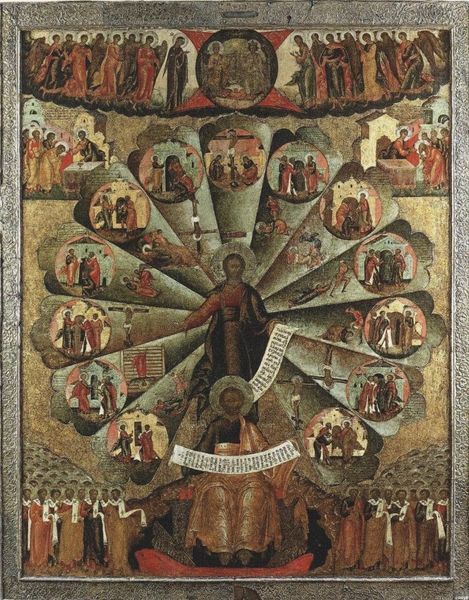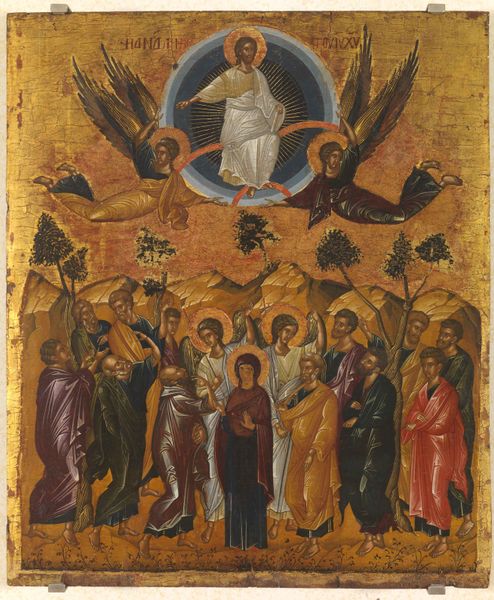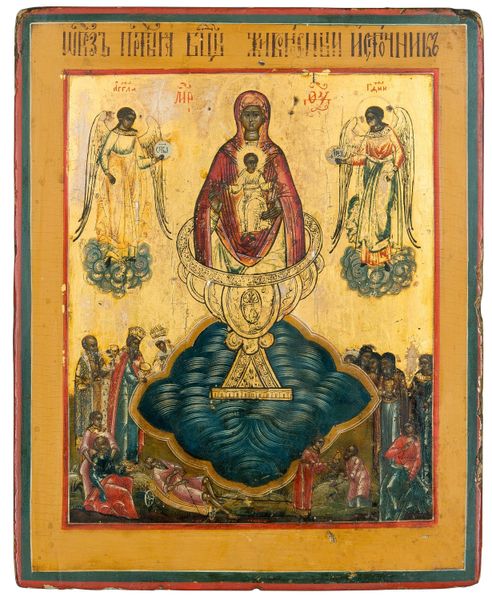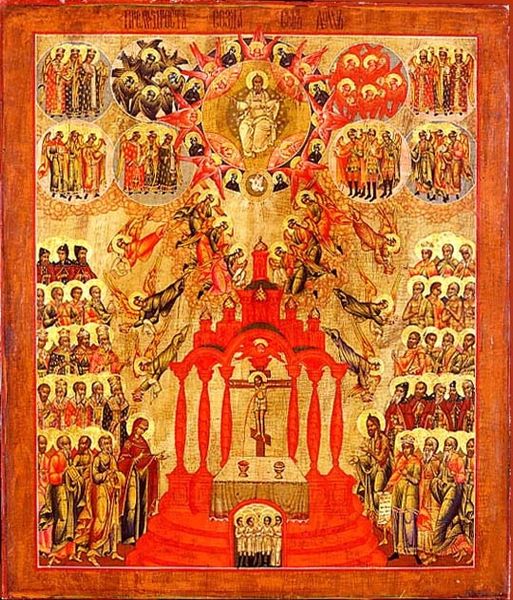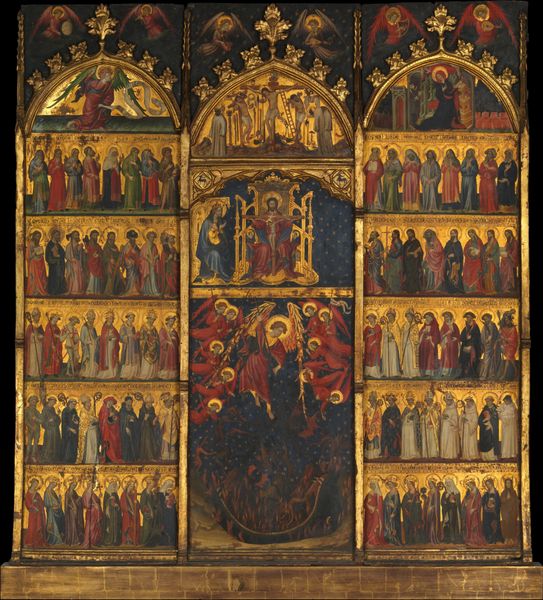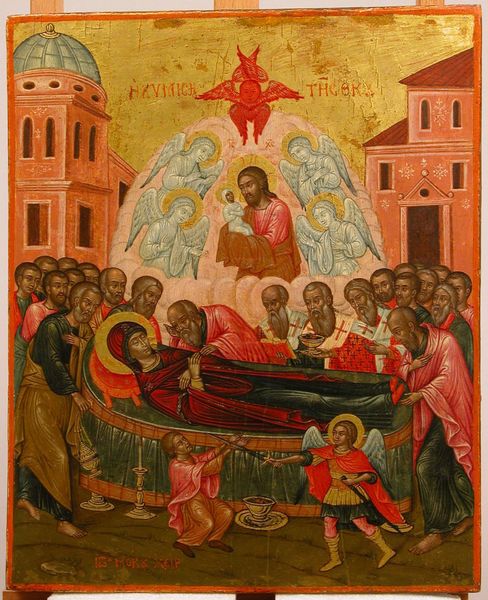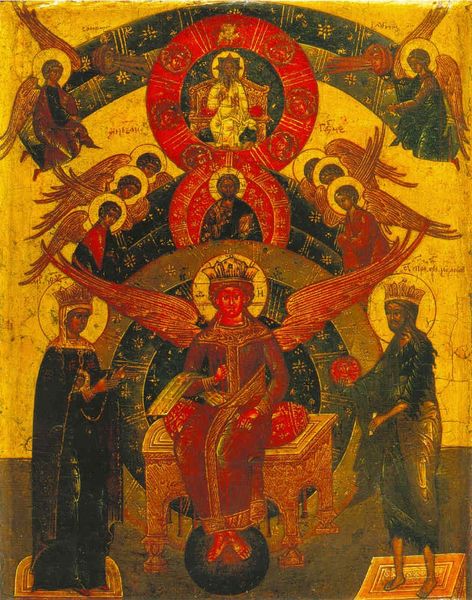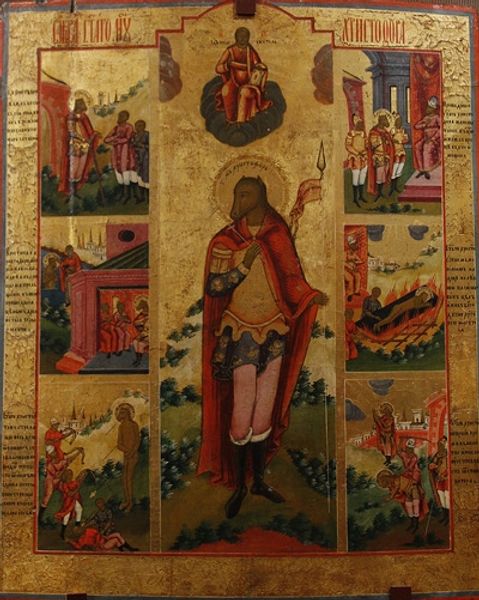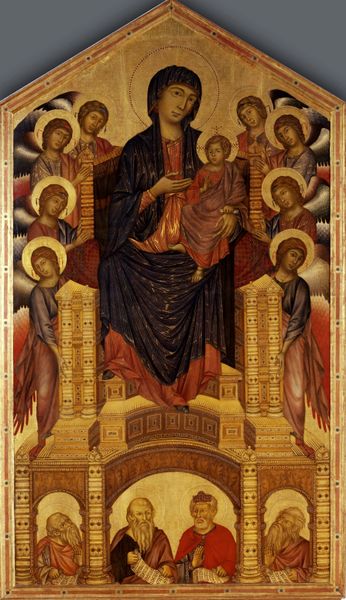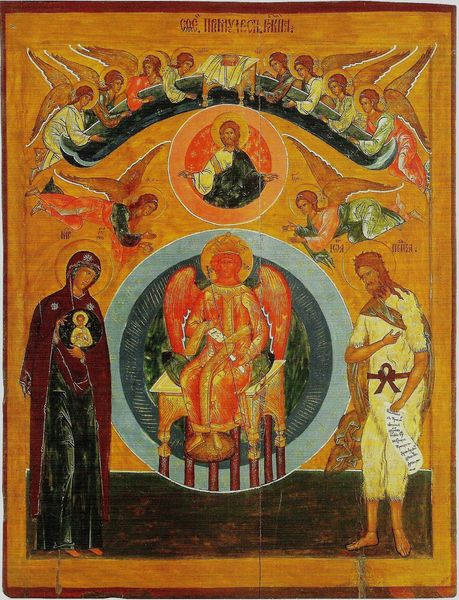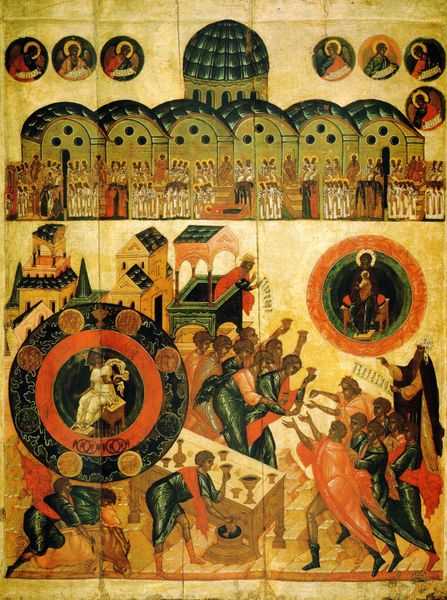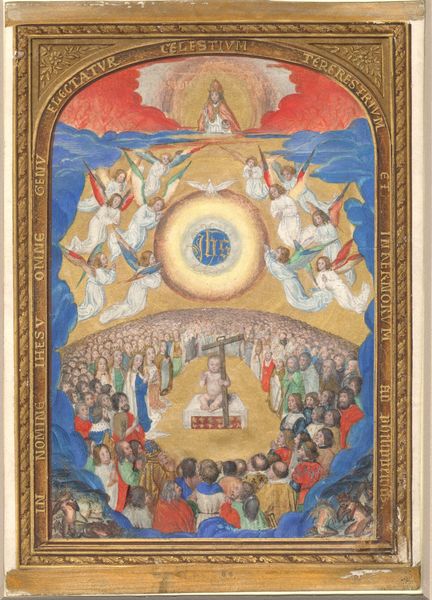
painting, oil-paint
#
byzantine-art
#
narrative-art
#
painting
#
oil-paint
#
figuration
#
oil painting
#
history-painting
#
miniature
Copyright: Orthodox Icons,Fair Use
Curator: Here we have a rather striking Orthodox icon, dating back to 1650; its title is “Apostolic Preaching.” The medium appears to be oil paint. What are your first impressions? Editor: Visually, it's quite dynamic. There's a pronounced radial symmetry, a whirlwind of scenes spiraling out from the center. A certain busyness almost verging on chaotic energy. The detailing, though, commands careful attention. Curator: Indeed. Notice how the central figure, presumably Christ, dominates, his pose radiating outward. His form, framed by a white radiance, contrasts with the smaller narrative vignettes illustrating events, perhaps moments from his life or stories of apostolic actions. The artist meticulously organizes chaotic scenes. Editor: From a historical vantage, its structure serves a didactic function common in religious art of the period. These weren’t just paintings; they were visual sermons, particularly crucial in a largely illiterate society. What stories do you see encoded within its concentric circles? Curator: Consider the layers. At the apex, we see the divine assembly enthroned within heavenly clouds. Christ on the cross is another pivotal, centered event. Lower down, scenes of suffering or conflict are also depicted. Note the geometric organization; they create symbolic relationships across diverse episodes. Each micro-scene is rendered with a dramatic sense of its spatial context, creating layers of visual intensity. Editor: That intense emotionality mirrors a trend during the Post-Byzantine period. Artists explored how visual representation could heighten spiritual experience in response to religious shifts. This icon speaks volumes about image-making, functioning not merely as aesthetic decoration, but as a theological and pedagogical tool that powerfully resonates. Curator: Ultimately, this piece invites reflection on visual interpretation. Do these interwoven events guide interpretation or does its aesthetic invite introspection and a deeply moving visual dialogue between divinity and mortal experiences? Editor: A potent example of history-laden images serving devotional purposes. Seeing this icon through both the formal devices used and its social purposes changes the whole viewing experience. Curator: Precisely, considering art history and the technical mastery transforms what we simply see into understanding.
Comments
No comments
Be the first to comment and join the conversation on the ultimate creative platform.
